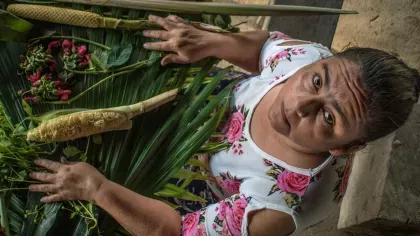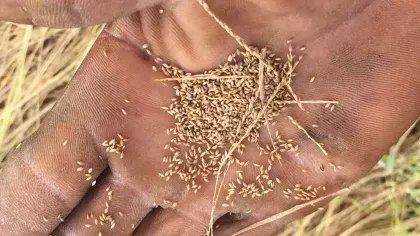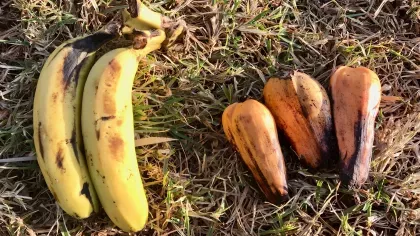30 May 2022
Milpas in Mexico: maintaining an ancient farming system
A sustainable farming system in Mexico that local communities depend on, is under threat from climate change.

For at least 7,000 years, farmers in Mexico and throughout Mesoamerica, have been growing crops using a traditional and efficient farming system called the milpa.
The system uses intercropping, meaning many different crop species are grown together in the same space, similar to companion planting in allotments, here in the UK.
The milpa system has been a sustainable method of growing crops for millennia, but now the climate crisis is threatening this system’s resilience.
A nutritional lifeline
A conventional milpa includes maize (Zea mays), also known as corn, beans (e.g. Phaseolus species) and squash (e.g. Cucurbita species), as well as many useful herbs including chillies (Capsicum species).
Mexico is the centre of domestication for these milpa crops and today, there is still a huge diversity of native varieties.
Milpa crops share the same resources - water, light, soil - but also provide benefits to each other.
Maize was selectively bred by Mesoamericans for milpa agriculture, to have strong stems to support climbing beans, allowing them access to light. These beans improve soil health by fixing nitrogen, an essential plant nutrient. The large sprawling leaves of the squash shade the soil, reducing moisture loss and preventing weed growth.
Together, the milpa’s harvest provides all the food groups and vitamins needed for a healthy human diet and is a nutritional lifeline for local and indigenous communities.

Climate change in Mexico
It is predicted that temperatures in Mexico will rise by 1 to 3°C by the 2060s, while rainfall is expected to decrease.
Although these changes may sound small, they may have far reaching detrimental effects. Hotter weather and more frequent droughts reduce crop yields, resulting in lower food production and negative health impacts for families and communities.
We are working with partners in San Luis Potosí, central Mexico, from the Instituto Potosino de Investigación Científica y Tecnológica (IPICYT) and local dryland farming communities, agronomists, and policy makers), to investigate how to reduce the threats posed from climate change to the arid region’s people, environment and economy.


Crops in a changing climate
We recently travelled to experimental field sites in San Luis Potosi where the effects of climate change were already evident.
In Charcas in the Altiplano, a dry region in northern San Luis Potosi state, the experimental milpa was unable to produce crops. In contrast, the site slightly further south, in Mexquitic de Carmona in the Central region, had an abundant harvest.

Across San Luis Potosi for the 2021-2022 harvest, the onset of the rainy season was delayed, pushing back seed sowing and crop production. Shorter and later growing seasons result in greater risks of hailstone and frosts before harvest.
To reduce the damage from the climate crisis, crop growers (including farmers, horticulturalists, and urban growers) will need to replace crops with different, more resilient varieties or completely different foods, and adopt new management strategies to maintain and improve yields.
By combining computer-based research, growth experiments, and citizen science, we have been measuring the expected changes in yield (how much food) and where crops will grow as environmental conditions change in the future.

Our results are starting to suggest new management strategies or alternative sites with more suitable environments for farmers to grow, to help mitigate the effects of climate change and preserve this traditional farming system for generations to come.
With the results from this initial research, in the future, we may be able to apply similar techniques to understand and enhance food security and sustainability in other regions across Mexico.
References
CIMMYT and IITA 2022 maize.org
Lopez-Ridaura, S., Barba-Escoto, L., Reyna-Ramirez, C.A., et al. (2021) Maize intercropping in the milpa system. Diversity, extent and importance for nutritional security in the Western Highlands of Guatemala. Scientific Reports 11: 1-10.
Climate Change Knowledge Portal - Mexico
Zizumbo-Villarreal, D. & Colunga-GarcíaMarín, P. (2010) Origin of agriculture and plant domestication in West Mesoamerica. Genetic Resources and Crop Evolution 57: 813-825.
Zizumbo-Villarreal, D., Flores-Silva, A. & Marín, P.C.G. (2012) The archaic diet in Mesoamerica: incentive for milpa development and species domestication. Economic Botany 66: 328-343.




